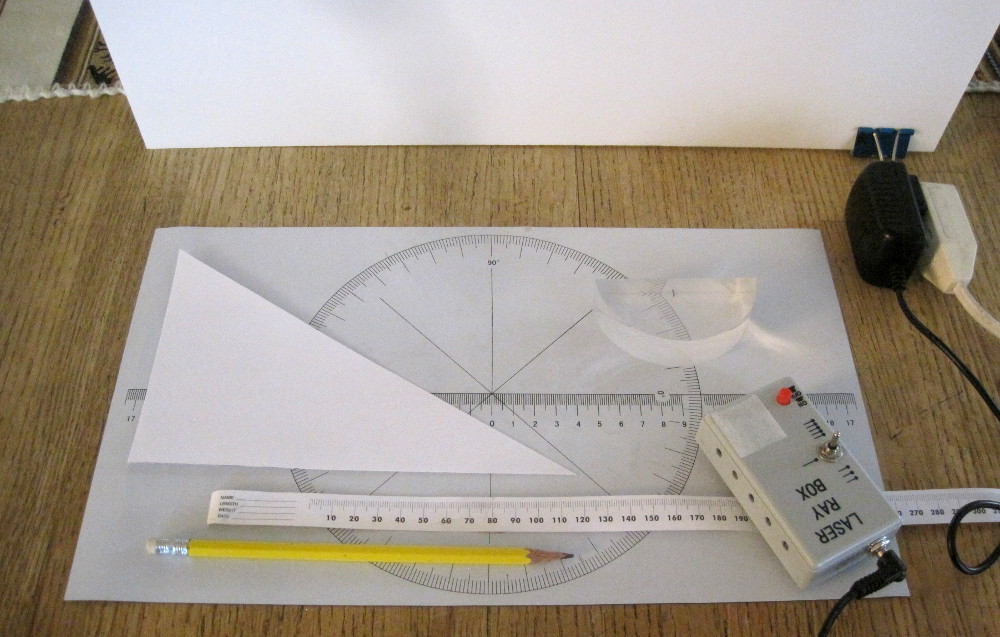
|
|
(3)
Put the semicircle on the mat, centered (between +4 cm and -4 cm).
|
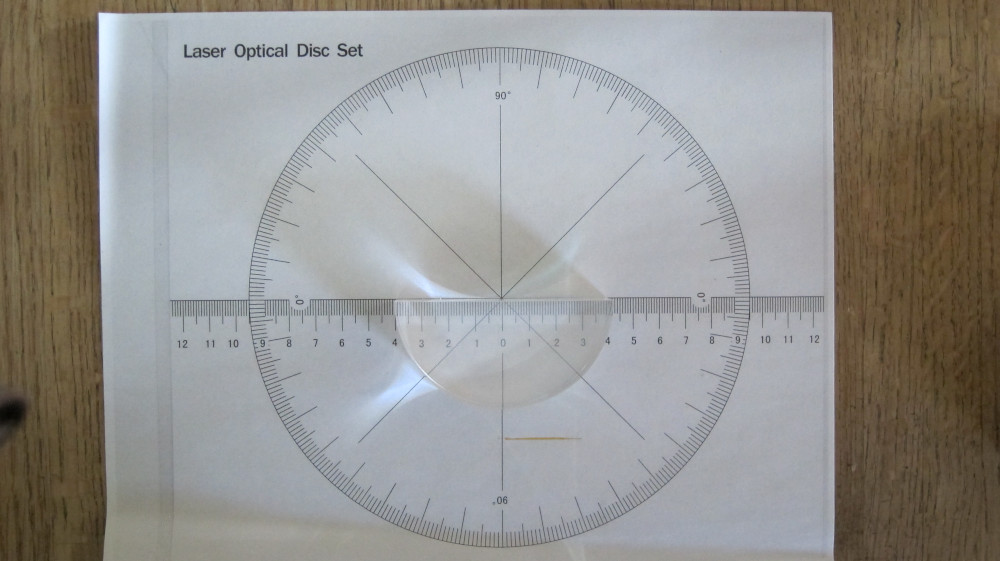
|
|
(4)
Turn on the laser, and aim it at the center.
The incoming beam from the bottom right gets
refracted, and exits the
prism on the top left (and hits the screen, which is only there for safety)
|
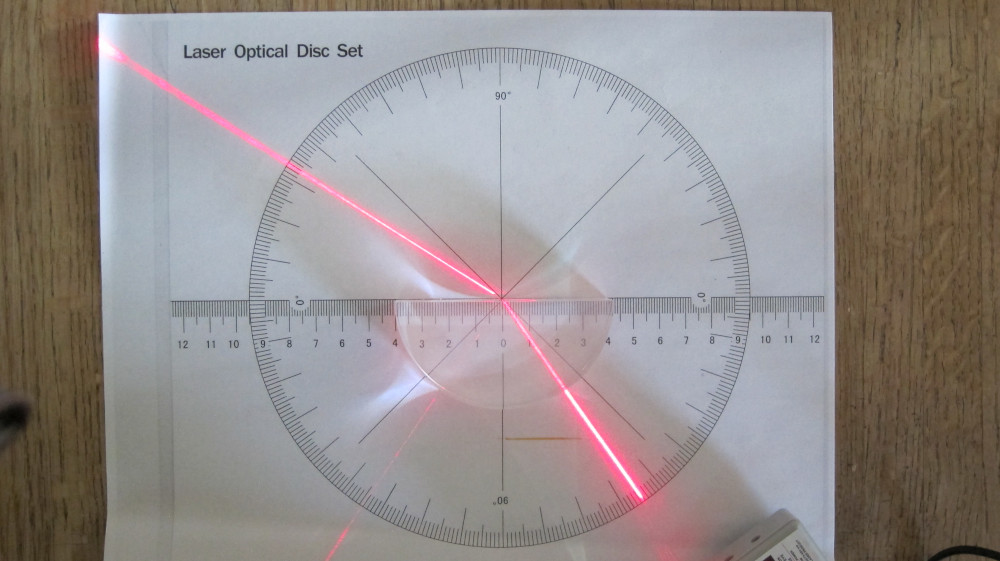
|
|
(5)
Make a mark where the incoming ray crosses the big circle
|
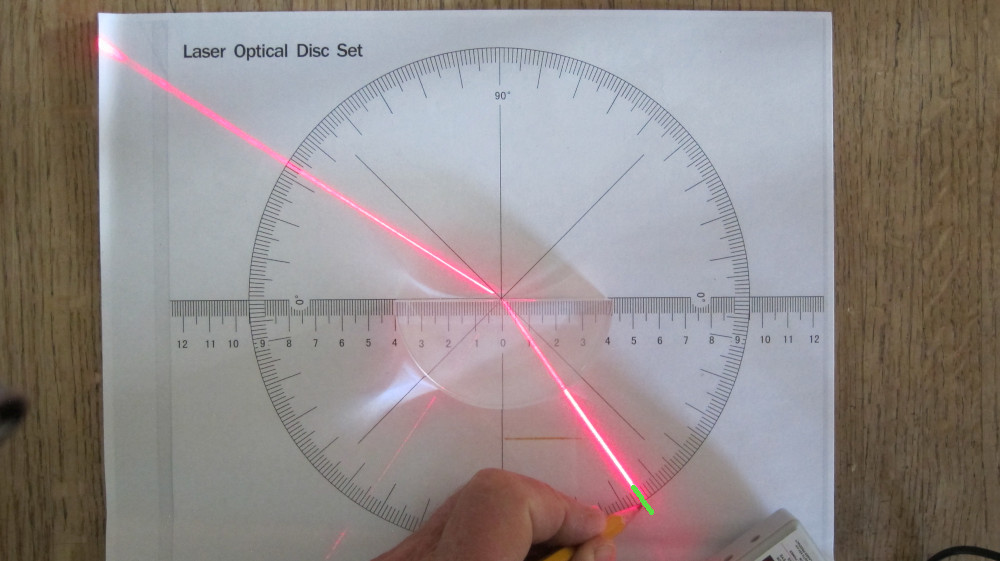
|
|
(6)
... and a mark where the outgoing ray crosses the big circle
|
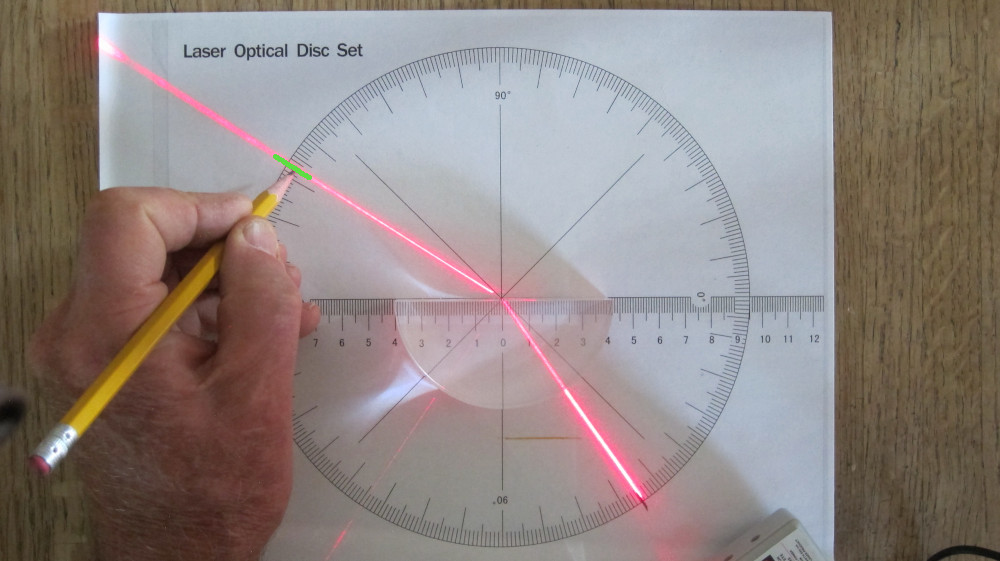
|
|
(7)
Turn off the laser, and remove the prism. Now we'll draw some lines.
Draw a line from the mark to the center line, using the triangle.
Measure the length of the line (in mm)
|
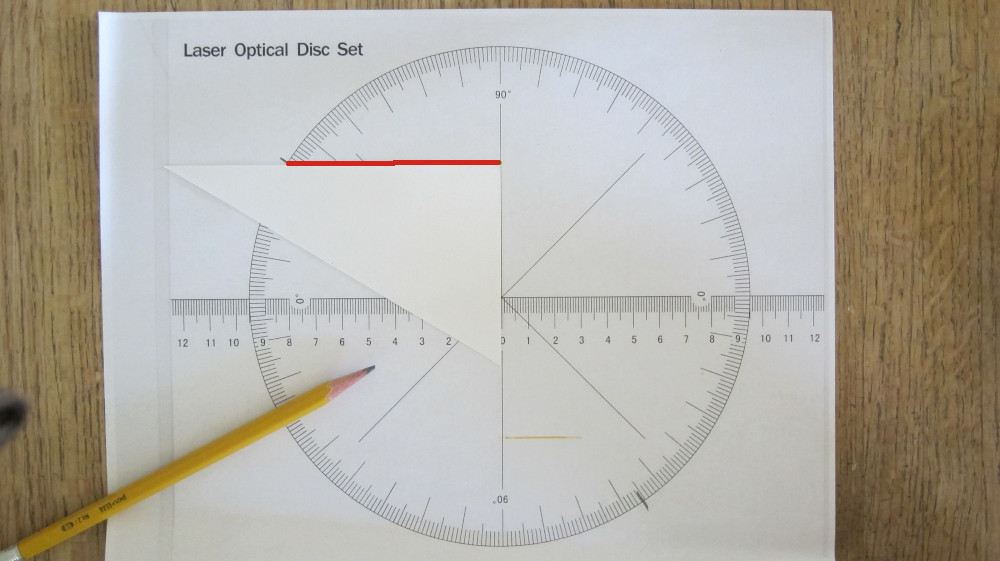
|
|
(8)
... and a line from the other mark to the center line, using the triangle.
Measure the length of this line also.
|
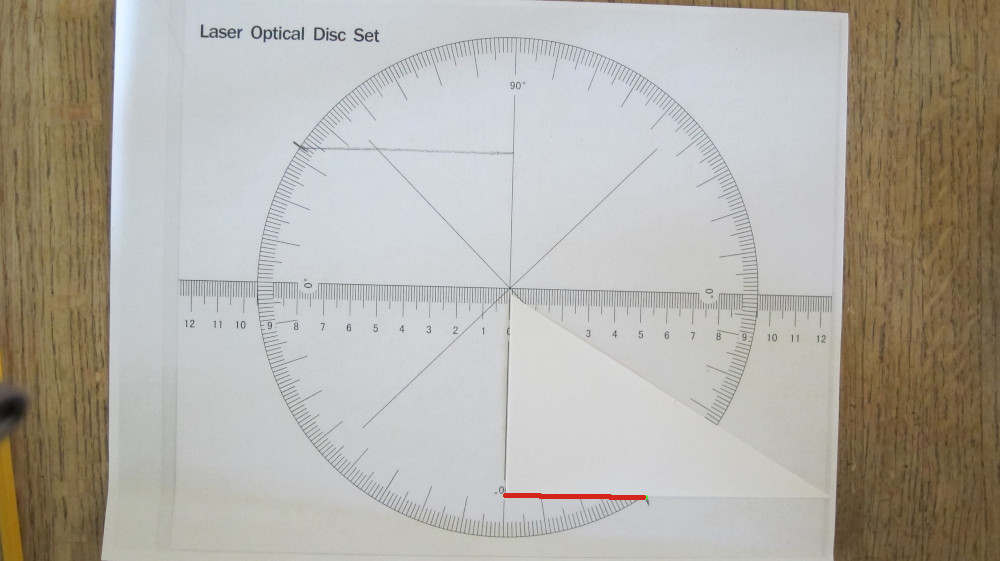
|
|
(9)
This is the result: We have two measurements, a and b
|
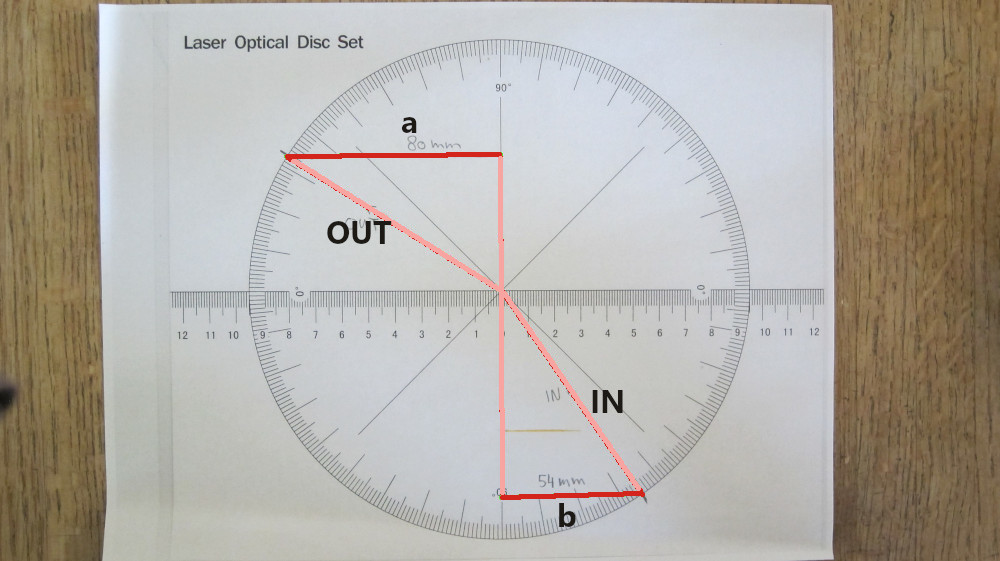
|
| (10)
Snell's law
says something about a rule that describes how light gets refracted by
some transparent material, in this case plexiglass.
We have our two numbers, a and b.
Lets collect them on the board and se if we can discover what the rule is.
| 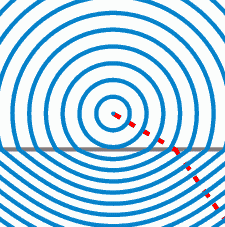
|
|
Here are some indices:
Vacuum 1
Air 1.000293
CO2 1.00045
Aerogel 1.006 - 1.050
Water 1.333
Olive oil 1.47
Ice 1.31
Plexiglass 1.49
Window glass 1.52
Diamond 2.42
Moisannite 2.65
| xxx
|
(13)
One last thing:
If you flip the prism over, and shine the laser in, and then slowly move counterclockwise,
the outgoing ray comes closer and closer to the
prism face. Beyond an angle called the critical angle, no light comes out at all, and all light is
trapped inside, as you can see on the right. This is called total internal reflection.
Check it out while you have the stuff on the table, and see if you can read off the critical angle on
the circular scale.
| 
|